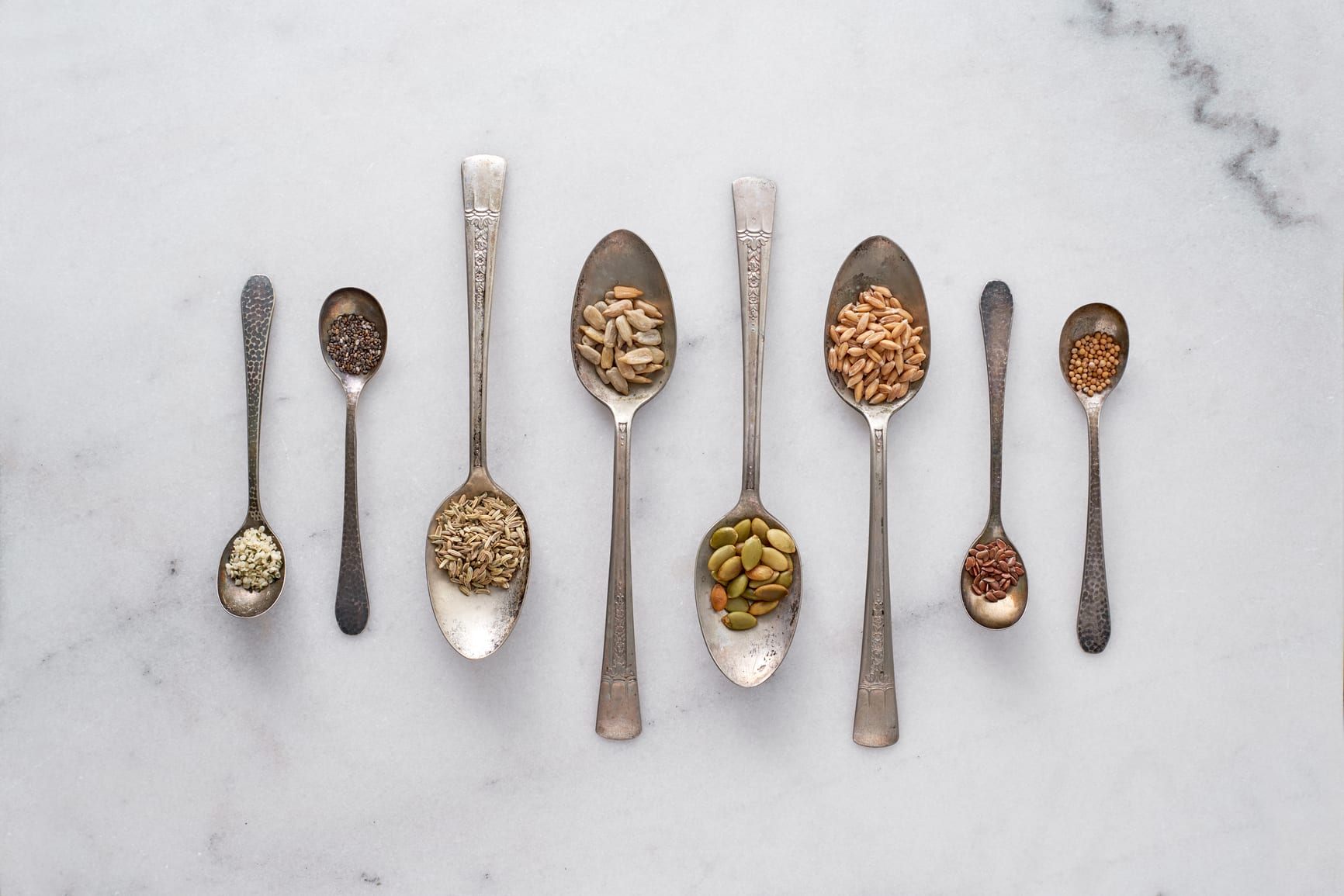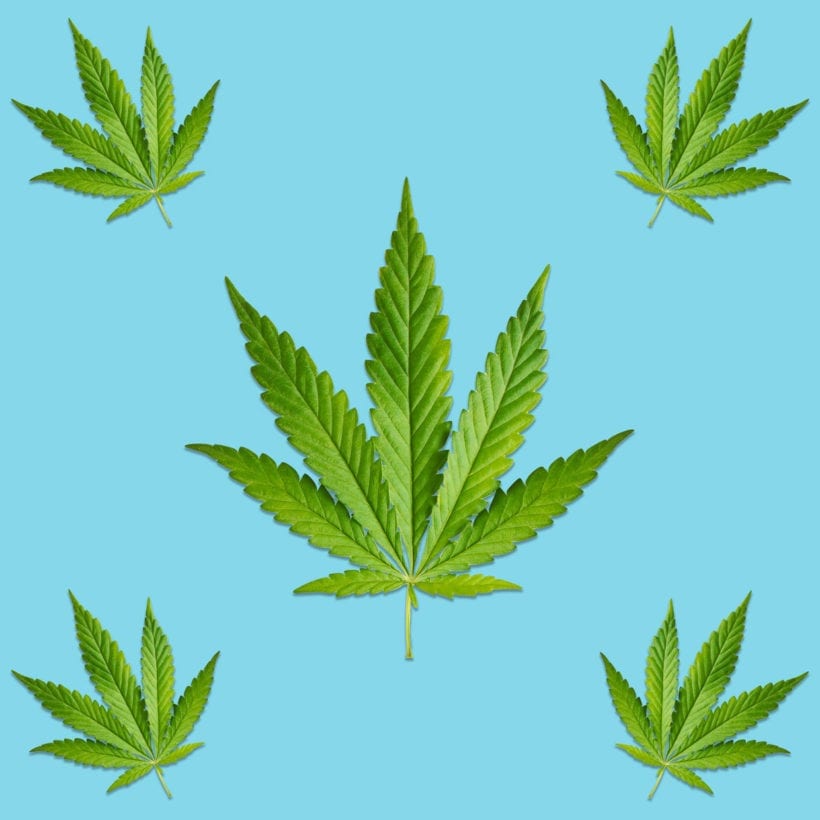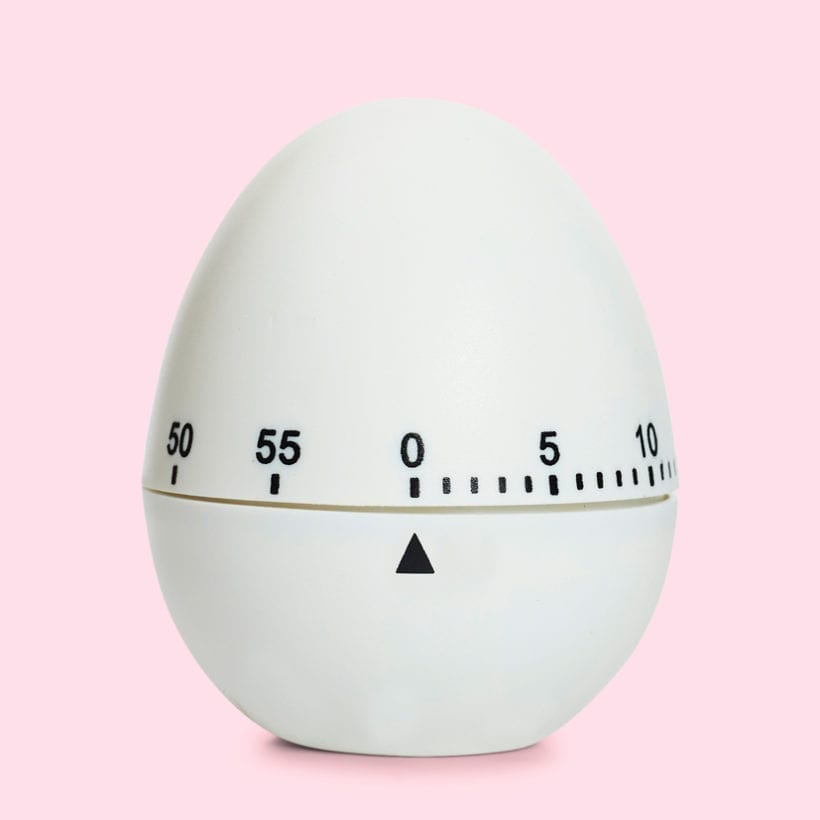While it may seem a little “woo-woo” and out there, the practice of consuming different seeds to regulate your hormones has been around for hundreds of years. Whether you’re struggling with acne, PMS, or low libido, seed cycling might be the au naturale answer to your hormonal woes.
What is seed cycling and where did it originate?
Seed cycling has been around since the 1500s — indigenous and ancient cultures have long used herbs, seeds and foods to restore hormonal imbalances and health. “Seed cycling involves the rotation of seeds in the diet during different phases of the menstrual cycle to correct hormonal imbalances by binding and excreting excessive hormones,” explains Jodie Horton, MD, a board-certified OB/GYN and Chief Wellness Advisor for Love Wellness. “Certain seeds such as pumpkin, sesame, sunflower, and flax seeds can regulate estrogen and progesterone levels and help women experiencing PMS, irregular cycles, perimenopause, menopause, and infertility by restoring hormonal balance.”
Which seeds do you take for which part of your cycle?
It’s important to track your menstrual cycle in order to know which seeds you should be taking on which days. “During the first half of your menstrual cycle (the follicular phase which occurs on day 1-14), it’s best to consume one tablespoon of ground pumpkin seeds and one tablespoon of ground flax seeds per day,” says Jenn Cino, a certified hormone specialist, personal trainer, and cycle syncing coach. “During the second half of the menstrual cycle (the luteal phase which occurs on day 15-28) you would consume one tablespoon of ground sesame seeds and one tablespoon of sunflower seeds per day.”
If you don’t have a regular menstrual cycle, don’t worry — you can always eat your seeds depending on the phases of the moon. “The moon phases and the average menstrual cycle are both about 28 days. The moon controls the waves in the ocean through the gravitational pull, and is thought to have an effect on your menstrual cycle, too,” explains Horton. Day 1 of your cycle would begin with the new moon — days 1-14 (new moon to full moon), you’d eat flax and pumpkin seeds. On days 15-28 (full moon to new moon), you’d eat sunflower and sesame seeds.
How does seed cycling regulate your menstrual cycle?
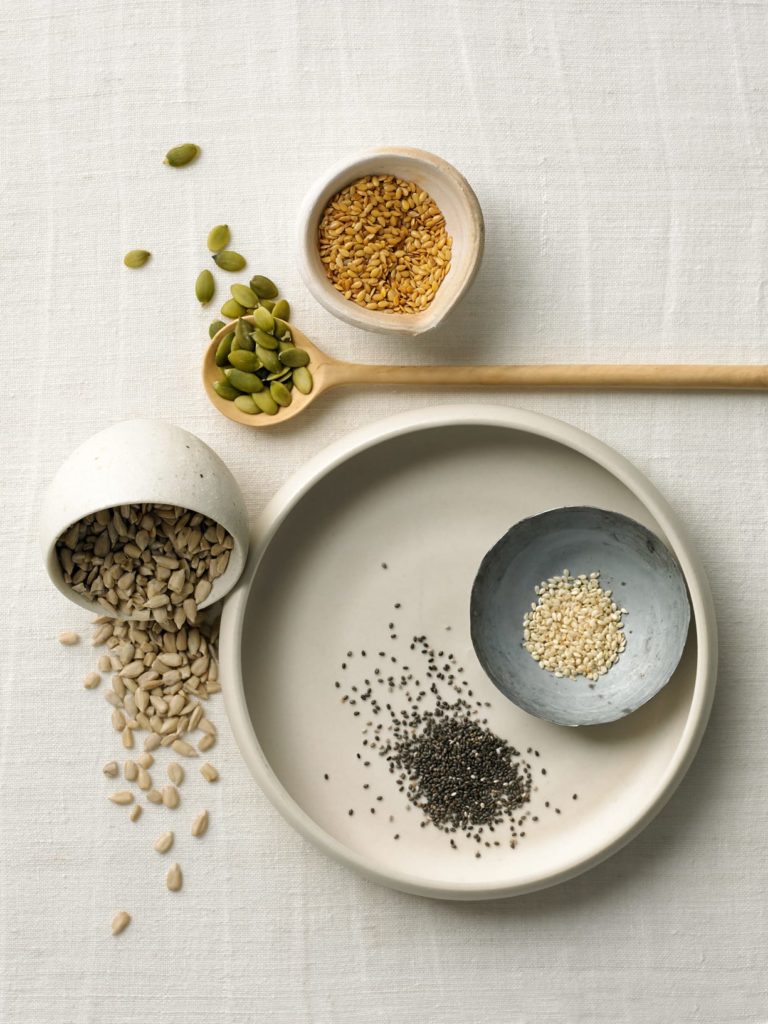
The four seeds have different properties that benefit the menstrual cycle in different ways. Flax seeds are phytoestrogens, which are compounds in plants that can mimic the action of estrogen. “Flax seeds help balance hormone levels by binding to estrogen and helping with the elimination of excess estrogen through our body’s natural detoxification pathways,” explains Cino. “On the other hand, pumpkin seeds are high in zinc which helps support the healthy production of progesterone — essential during our second phase in order to have drama-free periods or to support pregnancy.”
During the luteal phase of a woman’s cycle (ovulation until period starts), sesame seeds contain lignans that inhibit estrogen’s overproduction. “Selenium in sunflower seeds is thought to boost progesterone levels and reduce excess estrogen through liver detoxification,” says Horton. “Theoretically, this may promote fertility, support early pregnancy and decrease menstrual cramps.”
Regardless of which seeds you take/which phase you are in your menstrual cycle, seed cycling offers a boost of omega-3 fatty acids, too. “Omega-3 fatty acids have numerous health benefits, including reducing inflammation, promoting healthy hormone metabolism, and improving cervical mucus production,” says Horton.
What are the other ways seed cycling can help?
The benefits that come with balancing your hormones through seed cycling are vast. “Seed cycling can provide a plethora of benefits for a woman, but the outcomes will vastly depend on current health status, how severe the hormonal imbalances are, and if the person also incorporates healthy lifestyle practices (like exercising and eating for hormonal balance) alongside seed cycling,” says Cino.
“You may find that seed cycling provides relief for hormonal issues such as hormonal acne, PCOS, irregular periods, tender or painful breasts, bloating, mood swings and irritability, and can even help women regulate their period and support detoxification post-birth control,” explains Cino.
Are there any studies to back up seed cycling claims?
While no studies have been done to support seed cycling benefits, some studies have shown the benefits of individual seeds and their active role in supporting hormonal balance. “From acupuncturists to herbalists and naturopaths, alternative medicine practitioners have used seed cycling for nutritional value and regulate reproductive hormones,” says Horton. “It can take up to three months of daily use to see the benefits [of seed cycling] — keeping track of your symptoms can help identify shifts happening over time.”
How should you eat the seeds when seed cycling?
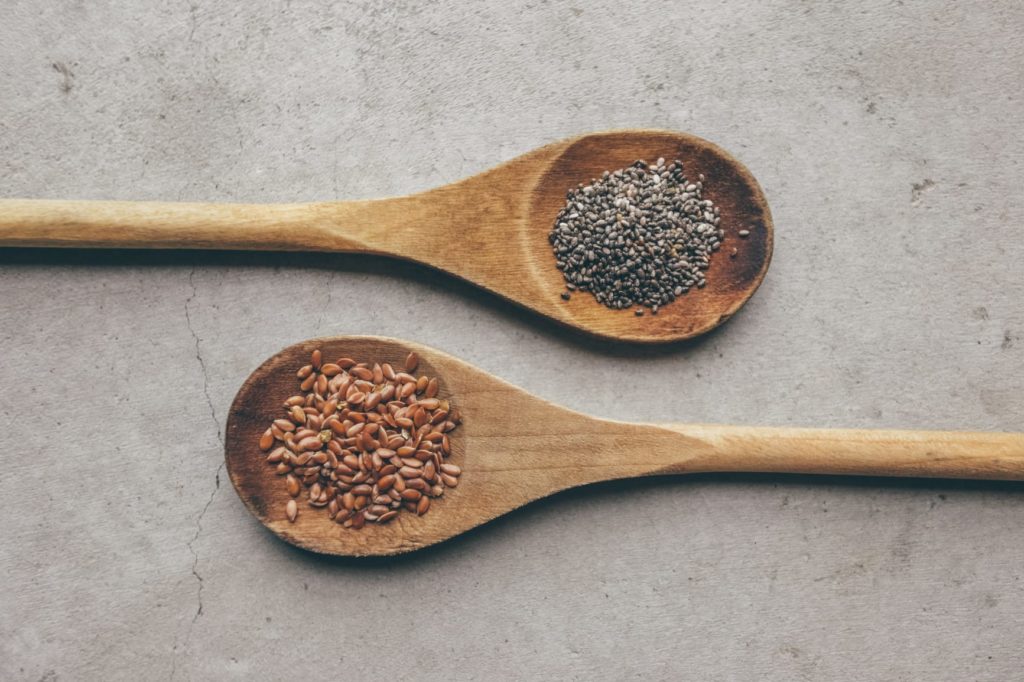
In order to best preserve the seeds’ nutrient content and therefore experience optimal results, it is best to use raw, organic (if possible) seeds. “You can consume the seeds either raw or grounded up, however, ground seeds are easier to digest,” explains Gabrielle Francis, ND, a naturopathic doctor and wellness advisor for Love Wellness. “They must be eaten shortly after grinding to preserve the integrity of the oils.”
Whole or ground seeds can be added to yogurt, smoothie, salads and anything that does not involve heating or cooking — that would denature the oils and make them less effective. “Just make sure to add [the seeds in] after you’ve cooked your meal, and not before,” says Cino.
Are there any risks involved with seed cycling?
Although there are no studies on the risks of seed cycling, most health and holistic practitioners believe that there is little to no risk in consuming seeds daily — unless you’re allergic to any of the four seeds. However, “[these seeds] are high in calories (approximately 50 calories per tablespoon) and can add some weight in some people, and they may cause bloating if you take the whole and do not grind,” says Francis. “The seeds swell up when you drink water and they may expand in the abdomen.”
